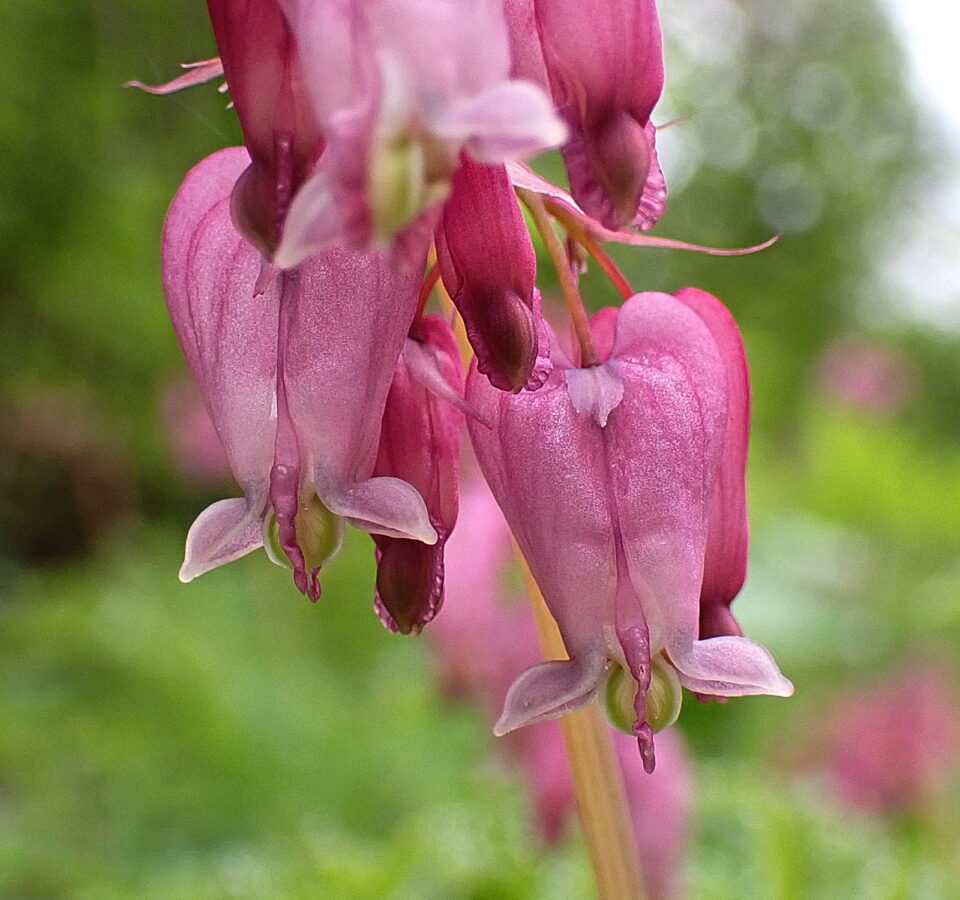While you wander the forest paths admiring the native flowers this April, don’t forget to listen for birds — the year-round residents, the newly-arrived summer-only residents, the soon-to-leave winter-only residents, and the migrants just passing through – they’re all singing in April, (and installing Merlin on your phone will help you identify them).
I don’t try to photograph birds, but below are some recent pictures I took of April flowers (and other plants) and a few interesting things I learned about them.
Pacific Bleeding Heart
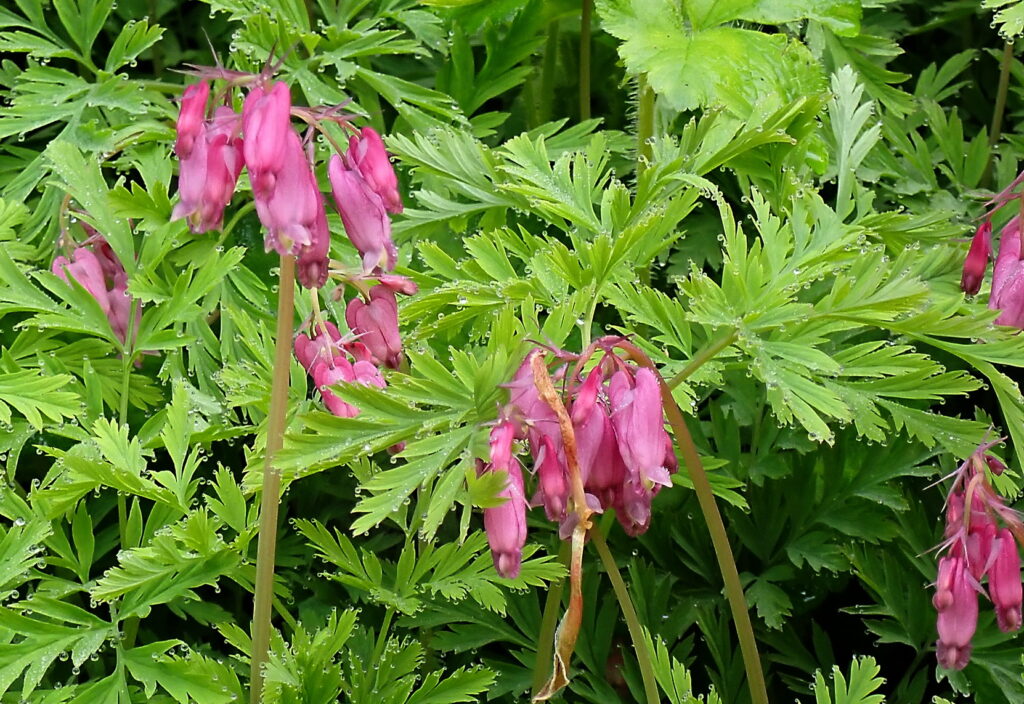

Though Pacific Bleeding Heart spreads mainly by rhizome, it also spreads by seed with the help of insects. After being pollinated by bumblebees or syrphid flies, ants help disperse the seeds. According to Eileen M. Stark (here) “The little black seeds of this plant evolved an oil-rich appendage which ants may feed to their young. When the ants toss the unused part of the seed that’s still viable, they assist in dispersal.”
Western Springbeauty

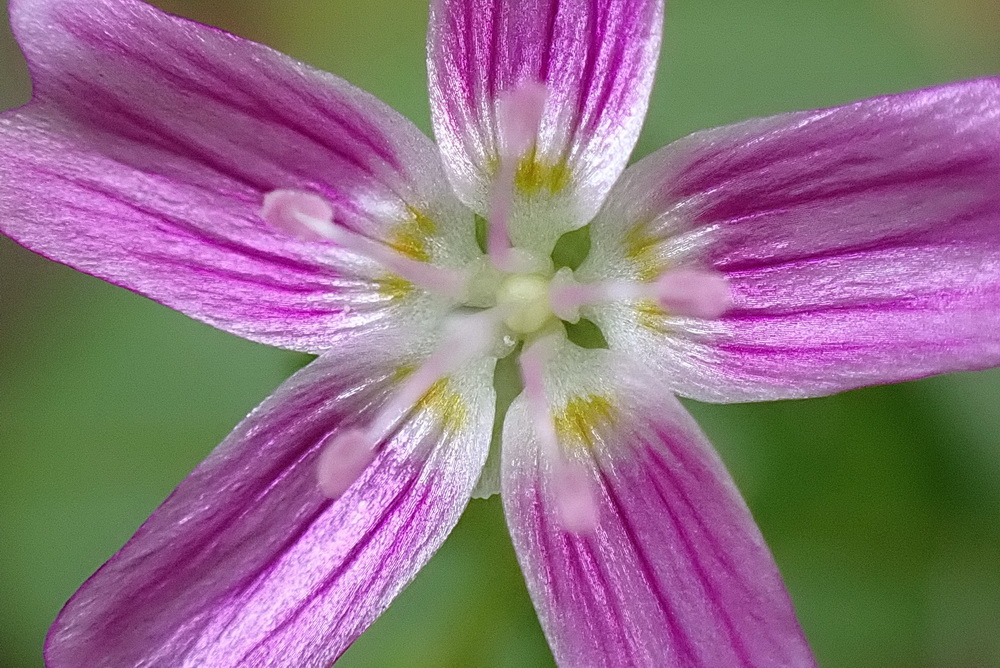
If you’re not familiar with Western Springbeauty (Claytonia sibirica), the photos above might lead you to believe that the blossoms are larger than they really are (petals less than 3/8 of an inch long).
Wikipedia says (here) that in addition to the Aleutian Islands and Western North America, Claytonia sibirica is native to Russia’s Commander Islands in the Berring Sea. That may be the origin of the common name “Siberian Miner’s Lettuce,” but that reminds me of the gulags, and “Candyflower” is insipid, so I like “Western Springbeauty” (per the Burke Herbarium here).
Flowering Shrubs
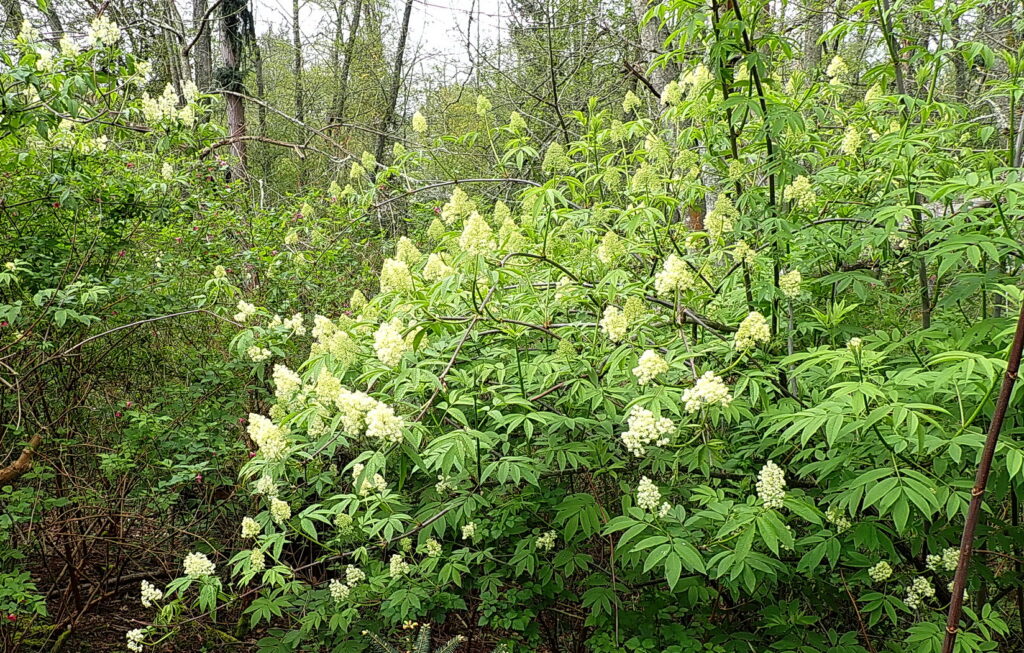

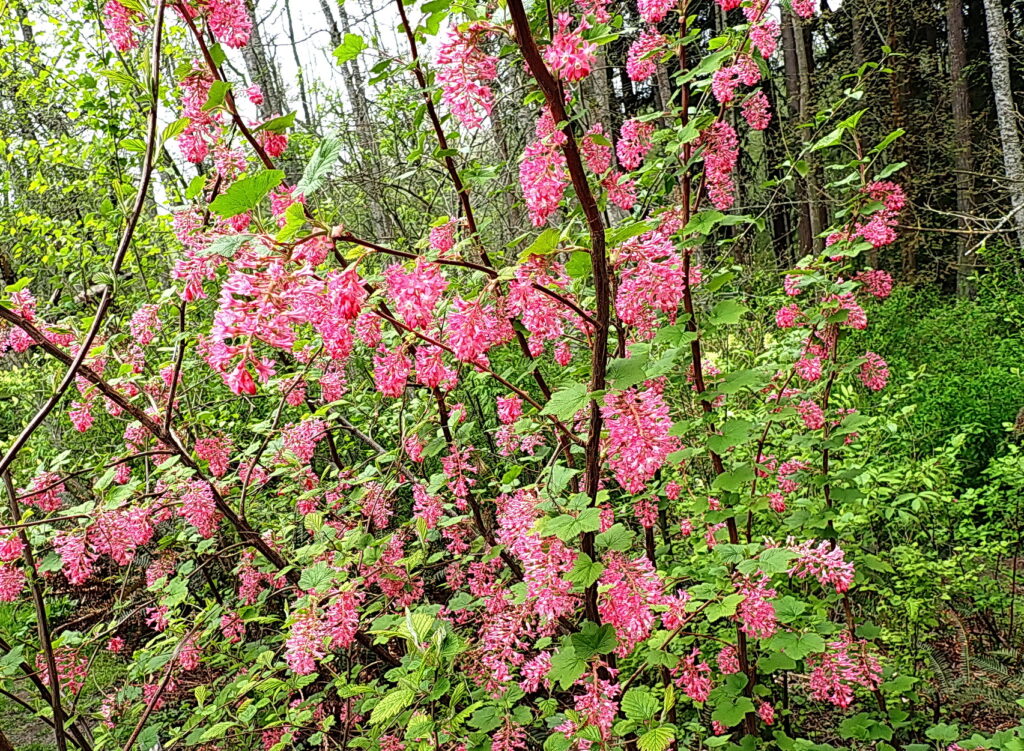
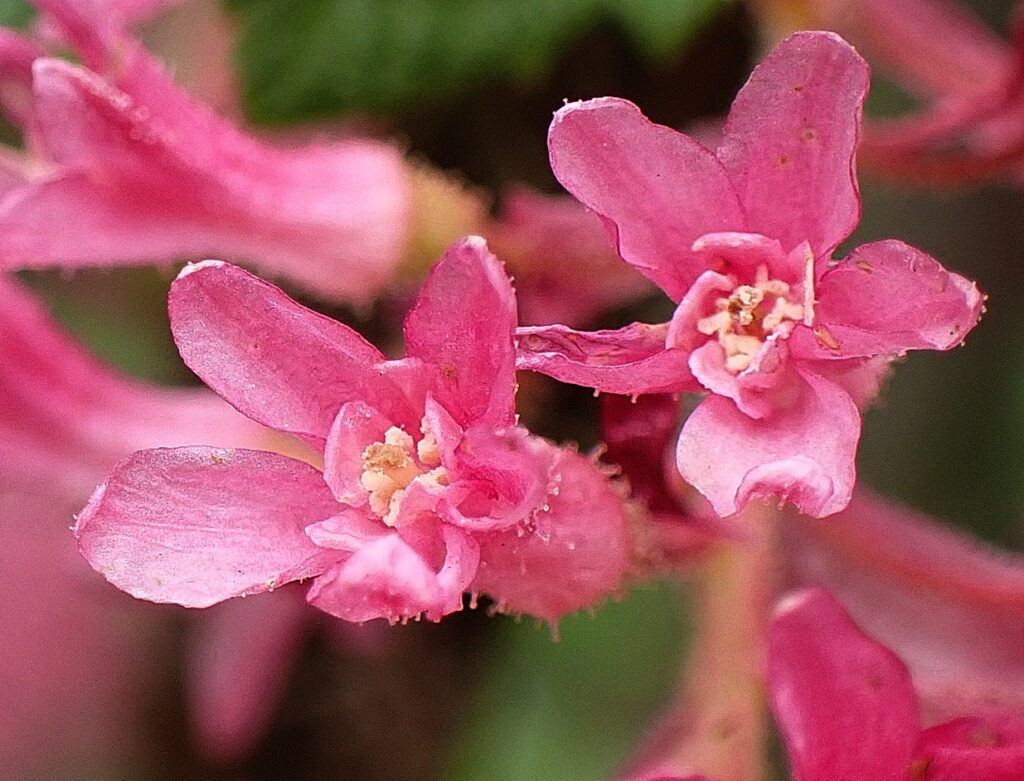
Several of the native shrubs flower before the deciduous trees fully leaf out, and the canopy closes. Though the Osoberry already finished flowering, the blossoms on the Salmonberry, Red Elderberry, and Red Flowering Currant linger.
Ferns
Several of the ferns are putting out their new annual fronds.

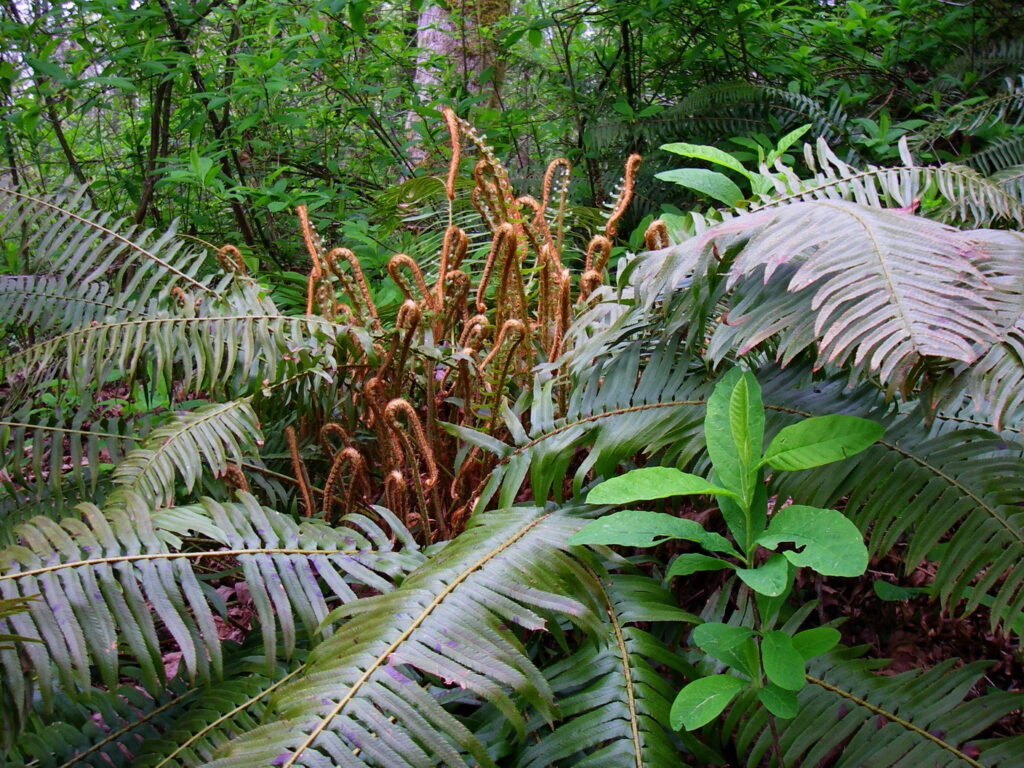
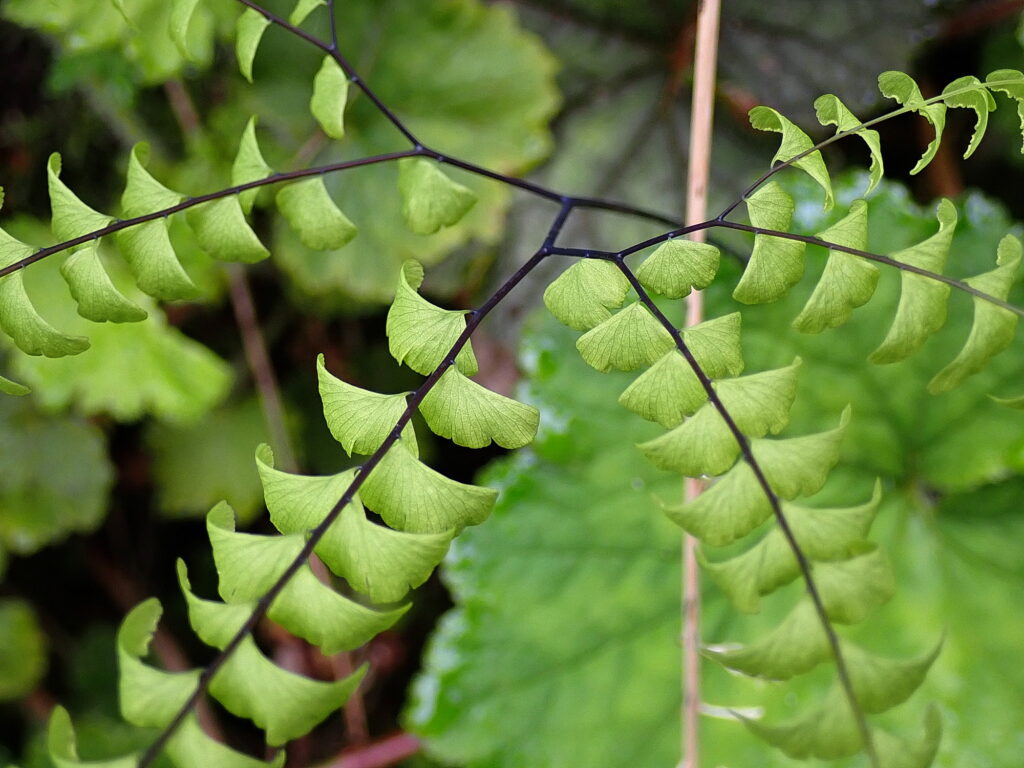
Bigleaf Maple

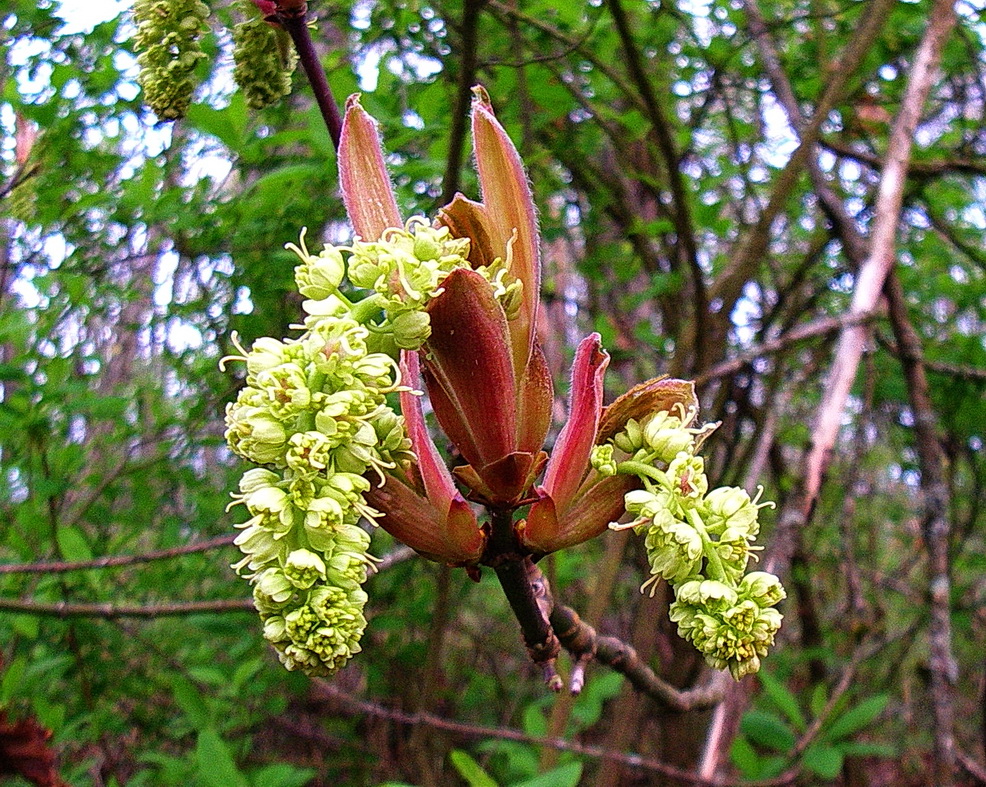
Lately I’ve watched Pine Siskins, Yellow-rumped Warblers, and Chestnut-backed Chickadees hanging on pendulous Bigleaf Maple flowers and poking around in the blossoms for several seconds. I assumed they were finding something to eat, but I don’t know what.
Update, 4/20/24. I brought home a Bigleaf Maple flower to see if I could figure out what the birds were eating. Today there were dozens of migrating Yellow-rumped Warblers and one Black-throated Gray Warbler foraging in the maples.
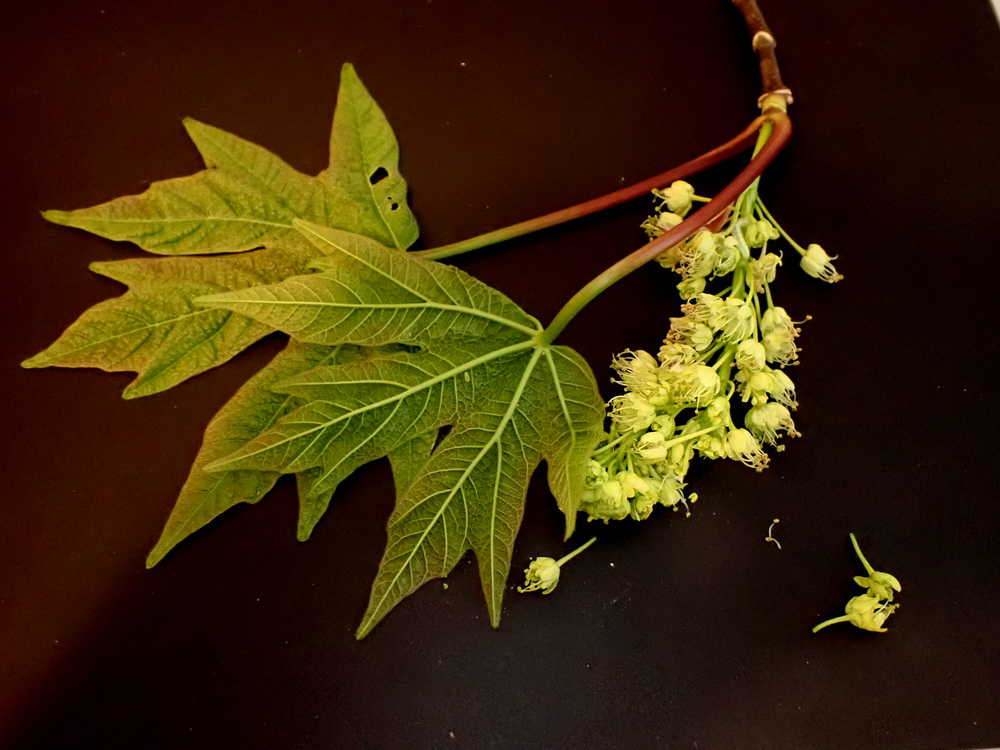
I thought they might be eating the tiny anthers.


Aha! When I shook the flower a caterpillar fell out.
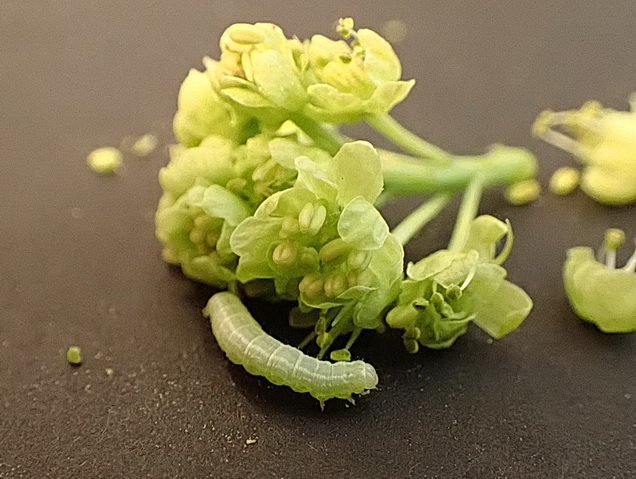
Why Leaves are Green – It’s Not What You Might Think
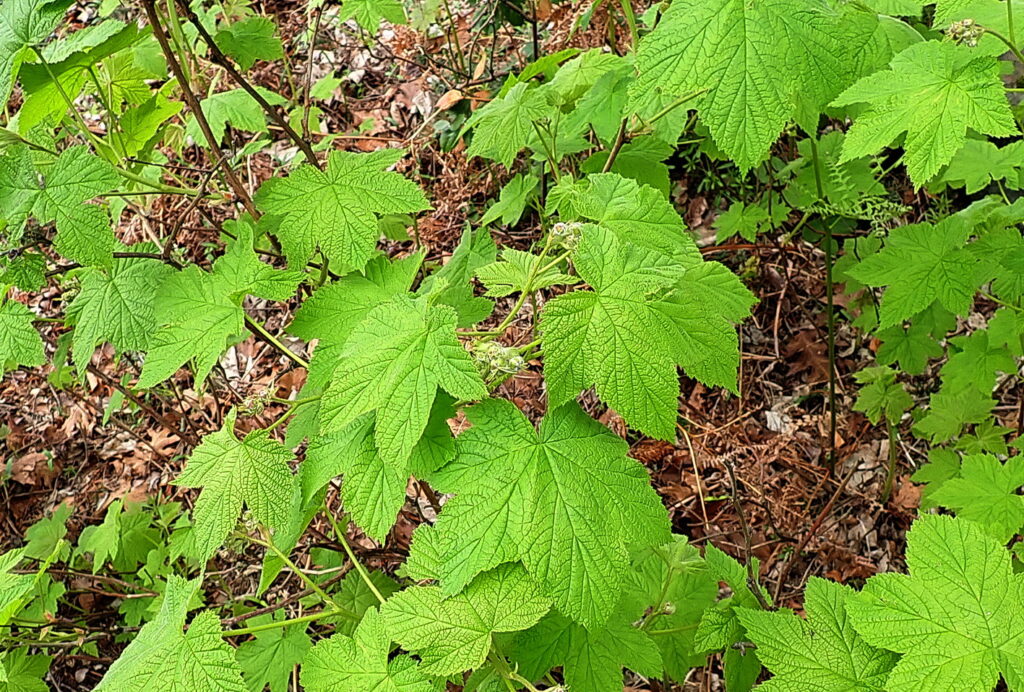
An interesting article (here) explains that leaves would not be green if photosynthesis machinery had evolved for maximum efficiency rather than smooth and reliable output.
